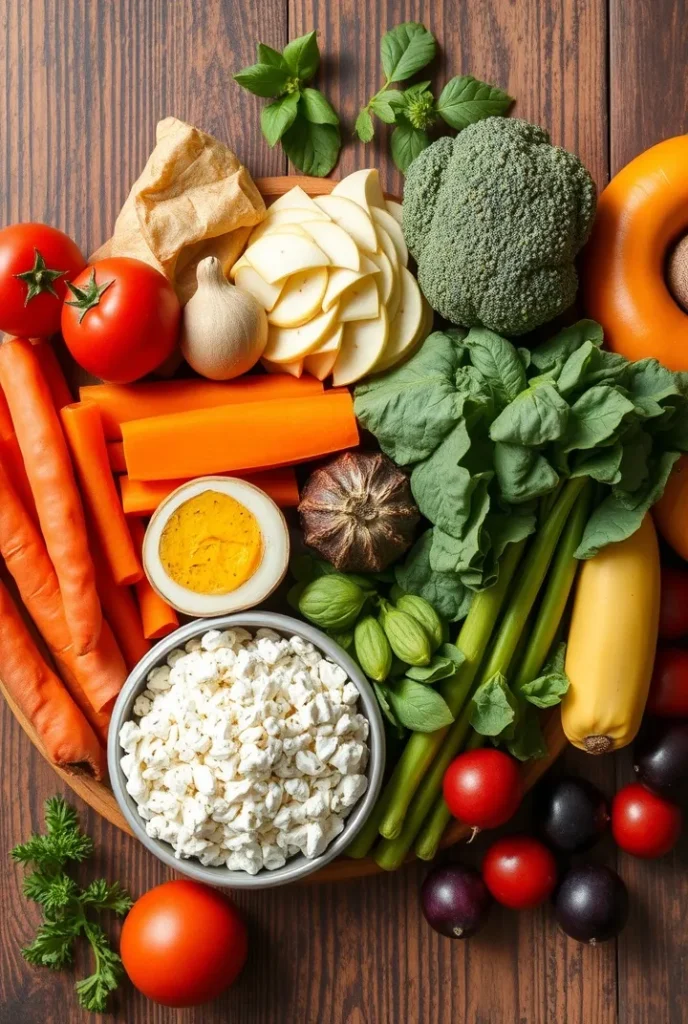Following a low iodine diet doesn’t mean sacrificing flavor in your meals. You might think eating without iodized salt equals bland food forever. Actually, countless herbs and spices can transform your cooking experience completely. Smart ingredient swaps make this dietary journey surprisingly delicious and satisfying. When your doctor recommends a low iodine diet, usually before radioactive iodine treatment, you need practical meal solutions. This temporary eating plan requires avoiding iodized salt, seafood, dairy, and processed foods. Understanding which ingredients to embrace versus avoid empowers you to create satisfying meals during this important health period.

Fresh Herb-Crusted Chicken Breast
Fresh herbs transform plain chicken into a restaurant-quality dish without any iodine concerns. Herbs like rosemary, thyme, basil, and oregano contain virtually no iodine while delivering incredible flavor complexity. This cooking method keeps chicken moist and flavorful. A four-ounce chicken breast provides about 25 grams of protein, supporting your nutritional needs during dietary restrictions. Research shows that herbs contain antioxidants that may support overall health during medical treatments.
Your Action Step: Coat chicken breasts with olive oil, then press fresh minced herbs into the surface before baking at 375°F for 20-25 minutes.
Take Charge of Your Health with The Home Doctor
Discover real-world remedies and first-aid solutions you can use when help isn’t around.
👉 Claim Your Home Doctor GuideRoasted Vegetable Medley with Garlic
Roasting vegetables concentrates their natural sweetness while garlic adds depth without iodine content. This technique works perfectly with bell peppers, zucchini, carrots, and onions. The high-heat cooking method caramelizes vegetable sugars naturally. One cup of mixed roasted vegetables provides essential vitamins A and C while remaining completely iodine-free. Studies indicate that colorful vegetables support immune function during medical treatments.
Your Action Step: Toss chopped vegetables with olive oil and minced garlic, then roast at 425°F for 25-30 minutes until edges are golden.
Homemade Vegetable Broth Soup
Creating your own vegetable broth ensures complete control over sodium and iodine content. Store-bought broths often contain iodized salt or additives you must avoid. Homemade versions taste fresher and more satisfying. Vegetable broth made from onions, carrots, and celery provides essential electrolytes without unwanted additives. Nutritionists recommend homemade broths for people following restricted diets because ingredients are transparent.
Your Action Step: Simmer chopped vegetables, bay leaves, and peppercorns in water for 45 minutes, then strain for clear, flavorful broth.
Quinoa Pilaf with Pine Nuts
Quinoa serves as an excellent grain alternative that’s naturally iodine-free and protein-rich. Pine nuts add healthy fats and satisfying texture to this versatile side dish. This combination creates a complete amino acid profile. One cup of cooked quinoa contains all nine essential amino acids, making it a complete protein source. Research shows quinoa provides sustained energy without blood sugar spikes.
Your Action Step: Toast quinoa in a dry pan for 2 minutes, then cook in vegetable broth with toasted pine nuts for added richness.
Baked Sweet Potato with Cinnamon
Sweet potatoes offer natural sweetness and essential nutrients while remaining completely iodine-free. Cinnamon enhances the natural flavors without adding sodium or restricted ingredients. This simple preparation satisfies comfort food cravings. One medium baked sweet potato provides over 400% of daily vitamin A requirements plus fiber and potassium. Studies suggest sweet potatoes support healthy blood sugar levels due to their fiber content.
Your Action Step: Pierce sweet potatoes with a fork, bake at 400°F for 45-60 minutes, then sprinkle with cinnamon before serving.
Lemon-Herb Rice Pilaf
Rice pilaf cooked with fresh lemon juice and herbs creates a bright, flavorful side dish. Using homemade vegetable broth instead of water adds depth while maintaining dietary compliance. Lemon juice provides natural acidity that enhances other flavors. Brown rice contains more fiber and nutrients than white rice while remaining naturally iodine-free. Nutritional experts recommend whole grains for sustained energy during dietary restrictions.
Your Action Step: Sauté rice with olive oil until lightly toasted, then add broth, lemon juice, and fresh herbs before simmering covered for 18 minutes.
Fresh Fruit Salad with Mint
Fresh fruits provide natural sweetness and essential vitamins while being completely iodine-free. Mint adds refreshing flavor that makes this dessert feel special rather than restrictive. This combination satisfies sweet cravings naturally. Fresh fruits contain natural antioxidants and fiber that support digestive health during dietary changes. Research indicates that colorful fruits provide compounds that may support recovery during medical treatments.
Your Action Step: Combine seasonal fruits like berries, melon, and grapes with fresh mint leaves and a squeeze of fresh lime juice.
Grilled Portobello Mushroom Steaks
Portobello mushrooms provide a meaty texture and umami flavor that satisfies hearty appetites. Their natural glutamates create savory depth without any iodine concerns. Grilling enhances their earthy flavor profile. Large portobello caps contain selenium and potassium while providing satisfying protein. Studies show mushrooms contain compounds that may support immune function during medical treatments.
Your Action Step: Marinate portobello caps in olive oil, balsamic vinegar, and herbs for 30 minutes before grilling 4-5 minutes per side.
Homemade Salad Dressings
Creating your own salad dressings eliminates concerns about hidden iodine sources in commercial products. Simple combinations of olive oil, vinegar, and herbs taste fresher than bottled alternatives. You control every ingredient completely. Olive oil provides healthy monounsaturated fats that help absorb fat-soluble vitamins from vegetables. Nutrition research shows that homemade dressings typically contain less sodium than commercial versions.
Your Action Step: Whisk together olive oil, lemon juice or vinegar, Dijon mustard, and fresh herbs for a basic vinaigrette that keeps refrigerated for one week.
Stuffed Bell Peppers with Ground Turkey
Bell peppers stuffed with seasoned ground turkey create a complete, satisfying meal. Using fresh herbs and spices instead of seasoning packets ensures iodine compliance. This dish provides protein and vegetables in one serving. Ground turkey contains less saturated fat than beef while providing complete protein. Food science shows that bell peppers contain vitamin C that enhances iron absorption from meat.
Your Action Step: Hollow bell peppers, stuff with cooked turkey mixed with rice and herbs, then bake covered at 350°F for 35-40 minutes.
Essential Pantry Staples for Success
Stocking your kitchen with compliant ingredients makes meal planning significantly easier. Focus on fresh herbs, olive oil, vinegar varieties, and non-iodized salt alternatives. Having these basics available prevents last-minute meal stress. Essential items include:
- Fresh and dried herbs
- Extra virgin olive oil
- Various vinegars
- Non-iodized salt or salt substitutes
- Fresh garlic and onions
- Lemons and limes
- Quality spices like paprika and cumin
Smart Shopping Strategies
Reading ingredient labels becomes crucial when following iodine restrictions. Avoid processed foods containing iodized salt, dairy products, and seafood-derived ingredients. Fresh, whole foods provide the safest options. Shop primarily in produce sections and select plain meats without added solutions. Frozen vegetables without sauce packets work well for convenience. Bulk bins offer herbs and spices without additives.
Meal Planning Made Simple
Planning weekly menus prevents decision fatigue and ensures variety in your restricted diet. Batch cooking components like grains and roasted vegetables saves time during busy periods. Preparation makes compliance much easier. Create a rotation of favorite recipes to prevent boredom while maintaining nutritional balance. Keep emergency meals simple with ingredients you always have available. Planning ahead reduces stress significantly. Following a low iodine diet temporarily requires creativity but opens doors to discovering new flavors and cooking techniques. These recipes prove that dietary restrictions can lead to delicious, satisfying meals that support your health journey ahead.

Lifebing is driven by an unrelenting passion for promoting health and well-being, our team is wholly committed to curating exceptional content and immersive experiences.
